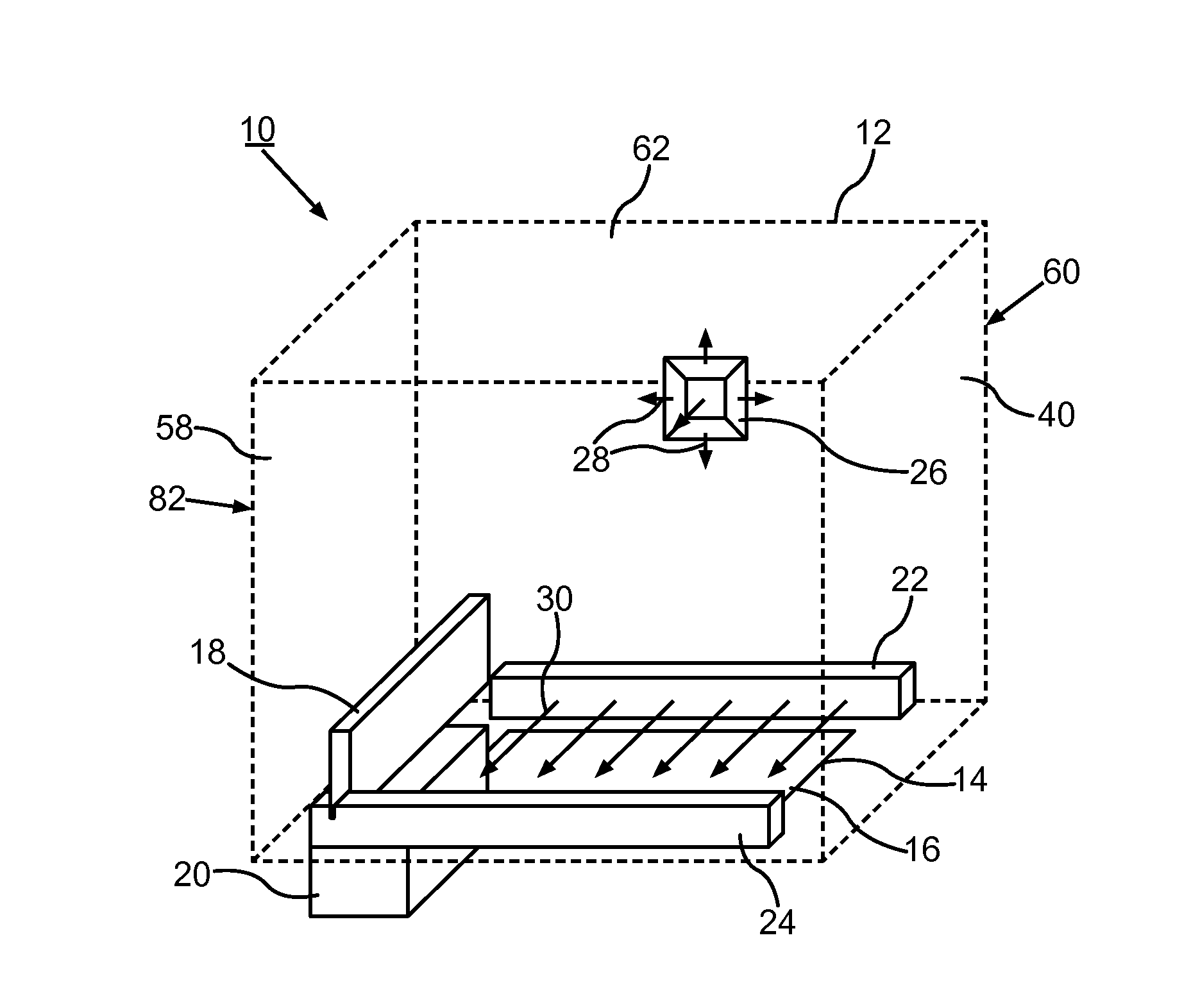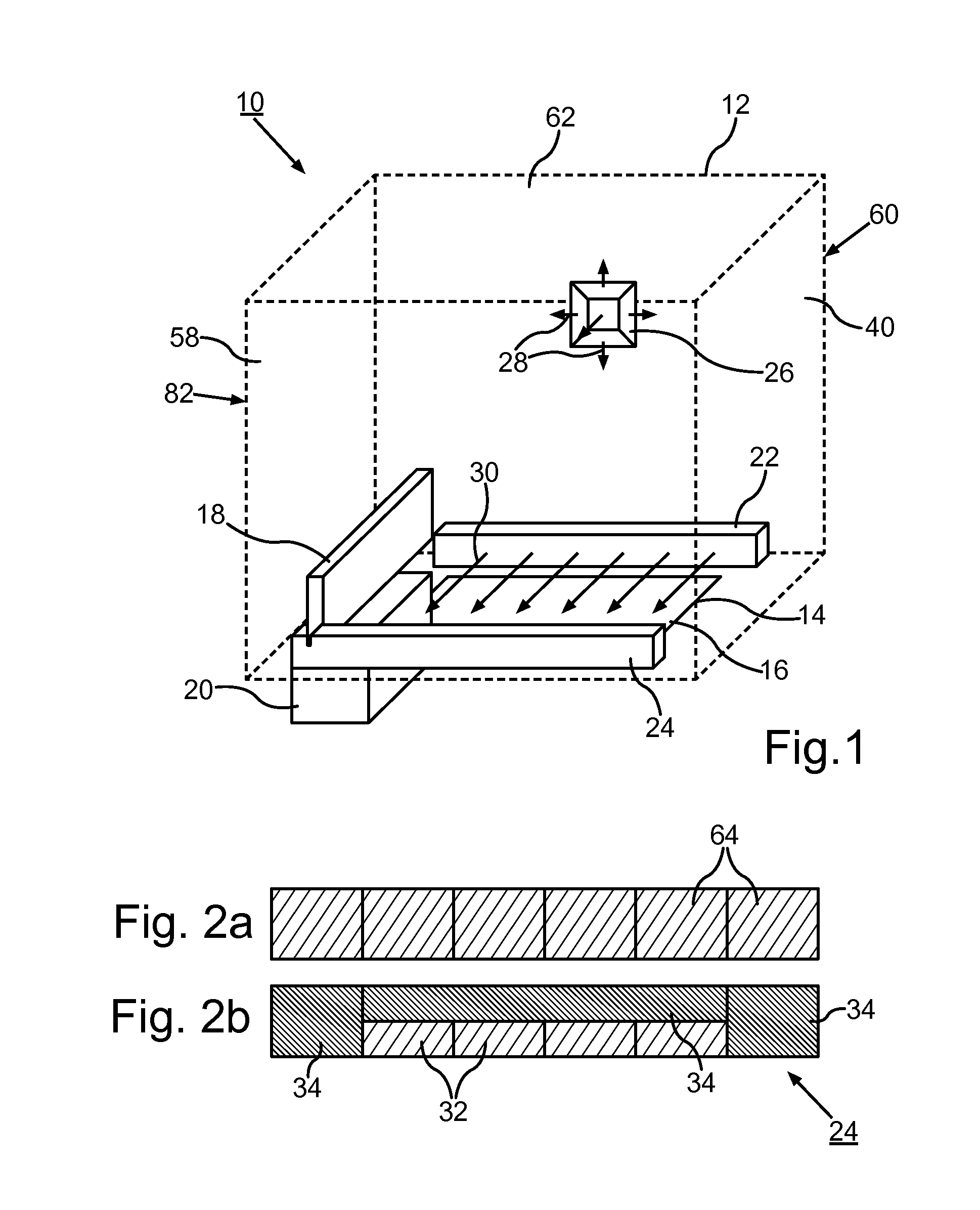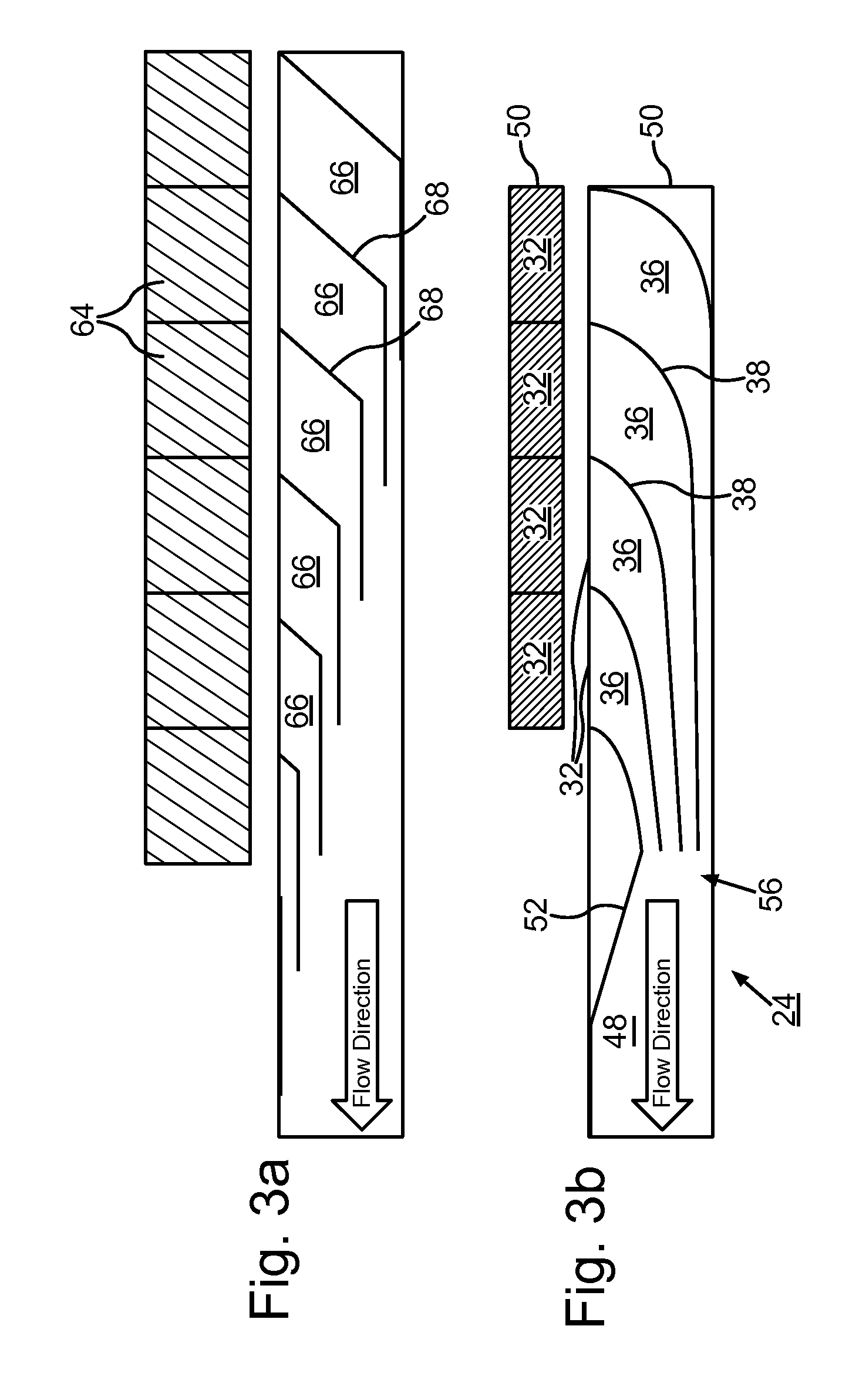Device and method for the manufacture or repair of a three-dimensional object
a three-dimensional object and device technology, applied in the field of three-dimensional object devices, can solve the problems of non-uniform flow rate over the nozzle width, deficient removal of process by-products, and inability to meet the requirements of the nozzle, so as to achieve the effect of increasing the flow rate, reducing the flow resistance within the flow channel, and increasing the flow ra
- Summary
- Abstract
- Description
- Claims
- Application Information
AI Technical Summary
Benefits of technology
Problems solved by technology
Method used
Image
Examples
first embodiment
[0034]FIG. 2a shows a schematic illustration of a suction nozzle according to the prior art. The design as well as the area of the suction orifices 64 are seen. Schematically illustrated in comparison to this in FIG. 2b is the suction nozzle 24 for use in the device 10. It is seen that the suction nozzle 24 comprises a plurality of suction orifices 32, with a subregion of the suction orifices 32 being closed by means of the covers 34. In the illustrated exemplary embodiment, the covers 34 are composed of an adhesive film, for example. The at least partial covering of the suction orifices 32 results, in comparison to the suction nozzle illustrated in FIG. 2a according to the prior art, in a marked reduction in the fluid-dynamically relevant cross-sectional area of the suction nozzle 24. In the illustrated exemplary embodiment, approximately 66% of the original suction orifices 64 are covered, so that there results a roughly threefold increase in the flow rate at the suction. In comp...
second embodiment
[0036]In contrast to this, FIG. 3b shows, in a schematic illustration, the suction nozzle 24 for use in the device 10. Initially evident is the reduced cross-sectional areas of the suction orifices 32 in comparison to the known suction nozzle according to FIG. 3a. In addition, it is clear in the schematically illustrated and cut-away plan view of the suction nozzle 24, which is likewise appended, that flow channels 36 are formed, in turn, within a casing 50 of the suction nozzle 24, and said flow channels are connected to the corresponding suction orifices 32 in such a way as to carry the flow. In this case, the flow channels 36 are formed by wall surfaces 38 and separated from one another, with the wall surfaces 38 having a contoured course that is curved at least in sections in the flow direction. In contrast to the walls 68 shown in FIG. 3a, the wall surfaces 38 are not bent and do not exhibit any corresponding corner regions. The wall surfaces 38 exhibit a rounded course, which...
third embodiment
[0037]FIG. 4 shows a schematic illustration of a suction nozzle 24 for use in the device 10. Evident once again is the design of the suction orifices 32, which are connected to corresponding flow channels 36 in such a way as to carry the flow. The flow direction of the gas flow is indicated by the arrows. Furthermore, it is seen that the suction channels 36 are designed in such a way that the suctioned gas flow is carried in a plane above the suction orifices 32. The suction orifices 32 are designed with a smaller cross-sectional area in comparison to the known suction nozzles. The flow channels 36 are once again formed by wall surfaces 38, which exhibit a contoured course that is curved at least in sections in the flow direction. The casing 50 of the suction nozzle 24 is divided into a lower casing section 54a and an upper casing section 54b in the illustrated exemplary embodiment, with the suction channel 36 being passed from the lower casing section 54a into the upper casing sec...
PUM
| Property | Measurement | Unit |
|---|---|---|
| Volume | aaaaa | aaaaa |
| Energy | aaaaa | aaaaa |
Abstract
Description
Claims
Application Information
 Login to View More
Login to View More - R&D
- Intellectual Property
- Life Sciences
- Materials
- Tech Scout
- Unparalleled Data Quality
- Higher Quality Content
- 60% Fewer Hallucinations
Browse by: Latest US Patents, China's latest patents, Technical Efficacy Thesaurus, Application Domain, Technology Topic, Popular Technical Reports.
© 2025 PatSnap. All rights reserved.Legal|Privacy policy|Modern Slavery Act Transparency Statement|Sitemap|About US| Contact US: help@patsnap.com



